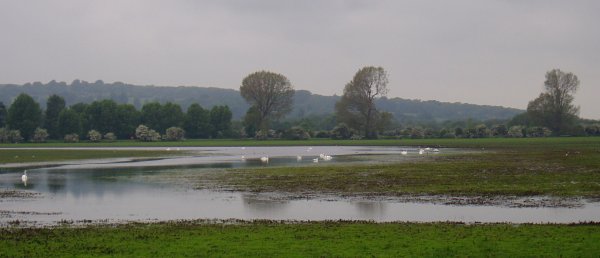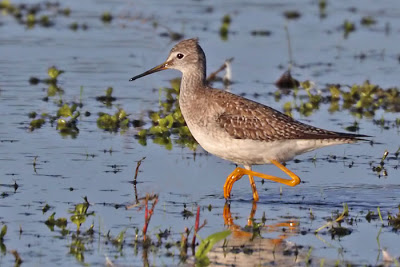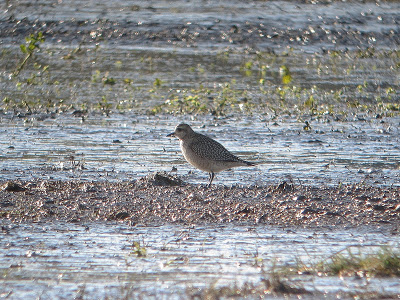Birds

Blogs: Port Meadow Birding
General
Grid Reference Access from SP501072 or SP501078.
Map
Below is a Google Map of the Patch with the various key locations labelled.
Directions and parking
Public transport
Specialities


- Henley Rd Gp's & Sonning : Friday, 23rd Jan.
Smew 3, a pair on the 2nd lake, west of access road to the rowing club and a male on the water ski lake to the east of access rd. R.B. Merganser, f, on Water Ski lake. Goosander, 4. Ring-necked Parakeet, a pr at nest...
- 18th September Radley Gp - Wryneck!
Wayne Bull has found a Wryneck at Radley GP near the SE corner of lakes H & I between the perimeter fence and the train track (see map here) Still present 18:30 (per Dominic Noris) First seen at 12:55, it has been seen several times since...
- Port Meadow 2nd October: Yellow-browed Warbler
YELLOW-BROWED WARBLER this evening doing what looks like a feeding circuit around the trees by the Port Meadow car park at the bottom of Walton Well Road (see here). During the half an hour that I watched it, it started in the copse of mixed trees between...
- South Leigh March 18
Great Grey Shrike 1 from 0830 to at least 1000 (with grateful thanks to Sally for putting out the news) Hen Harrier 1 Red Kite 2 Common Buzzard 8+ Common Kestrel 2 2 Short-eared Owl (Thomas Stevens) Directions for the Shrike Take the road from the A40...
- Otmoor Site Guide
Blogs: Otmoor Birding, The Otmoor Blogger Introduction The Otmoor basin forms the floodplain of the River Ray. It is a natural wetland that in the past flooded during the winter and then gradually dried out during the spring and summer to sedge, reed...
Birds
Port Meadow Site Guide

Blogs: Port Meadow Birding
General
Port Meadow is a large area of common grassland to the west of Oxford which is bordered by the Thames to the west, the railway line to the East and Wolvercote village to the north. Its main attraction from a birding point of view is when it floods in the winter. A large number of duck over-winter on the floods and depending on the amount of water present, at times there can be attractive mud flats which attract over-wintering and passage waders. To the north-east of the Meadow lies Burgess Field Nature Reserve, built on an old rubbish tip, which consists of scrub land and specially planted hedgerows.
Grid Reference Access from SP501072 or SP501078.
Map
Below is a Google Map of the Patch with the various key locations labelled.
View Port Meadow Birding Patch Boundaries in a larger map
Directions and parking
The main access point to the Meadow is from Walton Well Road, at the end of which is a car park. From the Walton Well Road car park there are a couple of paths across the Meadow, one heading west towards the river and one heading north along a part-metalled track. Taking this latter path leads north to the main flood area. The entrance gate into Burgess Field NR is at the end of this track. There is also a second access point via Aristotle Lane which enters the Meadow by the Trap Ground allotments. However parking is limited here and at peak access times (school start and end times) vehicular access over the canal bridge is restricted by rising bollards.
From the West: coming into Oxford along the Botley road, keep straight on past the station passing the Royal Oxford Hotel on your right. The road then bends round to the left. At the traffic lights turn left into Walton Street. Continue down Walton Street for a few minutes until you come to a mini-roundabout with the Victoria pub on the right and "Peppers Burgers" on the left. Turn left here into Walton Well road. Go over the canal bridge and immediately afterwards as the road bends right turn off left over the railway bridge. At the bottom of the road is a carpark on the left.
From the North: take the Woodstock road south from the ring-road until you come to St. Margaret's Road on your right. Turn right here and at the other end is a mini-roundabout. Turn left here into Kingston Road. Follow this road for a couple of minutes until you come to a second mini-roundabout. Turn right here into Walton Well Road and follow the instructions above.
Public transport
From the centre of Oxford take the 17, 17A or 17C bus and alight at the Longworth Road stop (by the "Grog Shop"). Walk down Longworth road and at the bottom turn right into Walton Well Road and go over the canal bridge. Follow the instructions for driving from there on.
Specialities
Winter: Over-wintering ducks include: Widgeon and Teal in large numbers, Shoveler, Gadwall, Pintail, Common Shelduck and occasionally Ruddy Shelduck. There is a large resident flock of Canada Geese and feral Greylag Geese which occasionally entices various other geese such as pink foot, bean and barnacle geese to drop in. Over-wintering waders can include Ruff, Redshank, Dunlin, Lapwing, Snipe and often large numbers of Golden Plover. There's usually a reasonable number of over-wintering gulls which can occasionally throw up a rarity. There's always the possibility of a Peregrine flying over, attracted by the large numbers of other birds. On Burgess Field Redwing, Fieldfare, Siskin, Stonechat, Snipe and occasionally Jack Snipe can all be seen.

Port Meadow attracts its fair share of rarities: this Lesser Yellowlegs
spent nearly a month on the floods in October 2010
Spring/Autumn: Stopping briefly on passage one might expect Ruff, Redshank, Dunlin, Ringed Plover, Little Ringed Plover, Black and Bar-tailed Godwit, Oystercatcher, Curlew, Little Stint, Whimbrel and Greenshank though it's possible for anything to turn up. Garganey can be seen in March and April. Common and Arctic Tern can pass through as can Little Gull. Yellow and White wagtail and Wheatear are also possible in the surrounding fields. In Burgess Field Barn Owls can be seen hunting at dusk.
Another rarity was this American Golden Plover in November 2012
Summer: if the floods all dry up then there is relatively little of interest on the Meadow itself. However whilst the floods remain there is always the possibility of something interesting dropping in. In Burgess Field there are a variety of warblers including Grasshopper Warbler.
Residents in Burgess Field include Skylark, Green Woodpecker, Reed Bunting and a variety of common finches.
On the river Thames itself especially amongst the back waters are Great Crested Grebe, Little Grebe, Grey Heron, Grey Wagtail and Kingfisher.
- Henley Rd Gp's & Sonning : Friday, 23rd Jan.
Smew 3, a pair on the 2nd lake, west of access road to the rowing club and a male on the water ski lake to the east of access rd. R.B. Merganser, f, on Water Ski lake. Goosander, 4. Ring-necked Parakeet, a pr at nest...
- 18th September Radley Gp - Wryneck!
Wayne Bull has found a Wryneck at Radley GP near the SE corner of lakes H & I between the perimeter fence and the train track (see map here) Still present 18:30 (per Dominic Noris) First seen at 12:55, it has been seen several times since...
- Port Meadow 2nd October: Yellow-browed Warbler
YELLOW-BROWED WARBLER this evening doing what looks like a feeding circuit around the trees by the Port Meadow car park at the bottom of Walton Well Road (see here). During the half an hour that I watched it, it started in the copse of mixed trees between...
- South Leigh March 18
Great Grey Shrike 1 from 0830 to at least 1000 (with grateful thanks to Sally for putting out the news) Hen Harrier 1 Red Kite 2 Common Buzzard 8+ Common Kestrel 2 2 Short-eared Owl (Thomas Stevens) Directions for the Shrike Take the road from the A40...
- Otmoor Site Guide
Blogs: Otmoor Birding, The Otmoor Blogger Introduction The Otmoor basin forms the floodplain of the River Ray. It is a natural wetland that in the past flooded during the winter and then gradually dried out during the spring and summer to sedge, reed...
